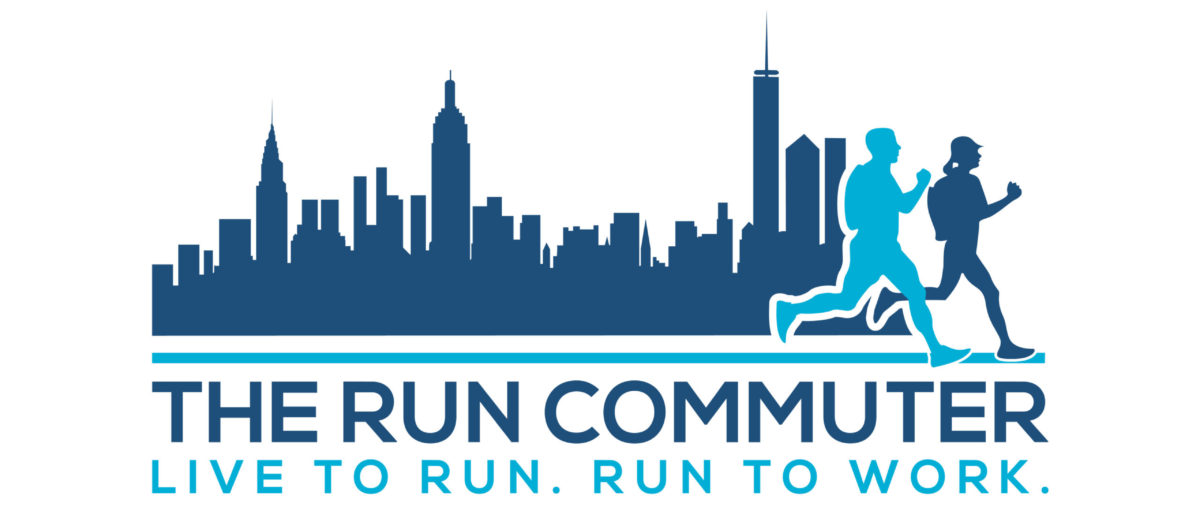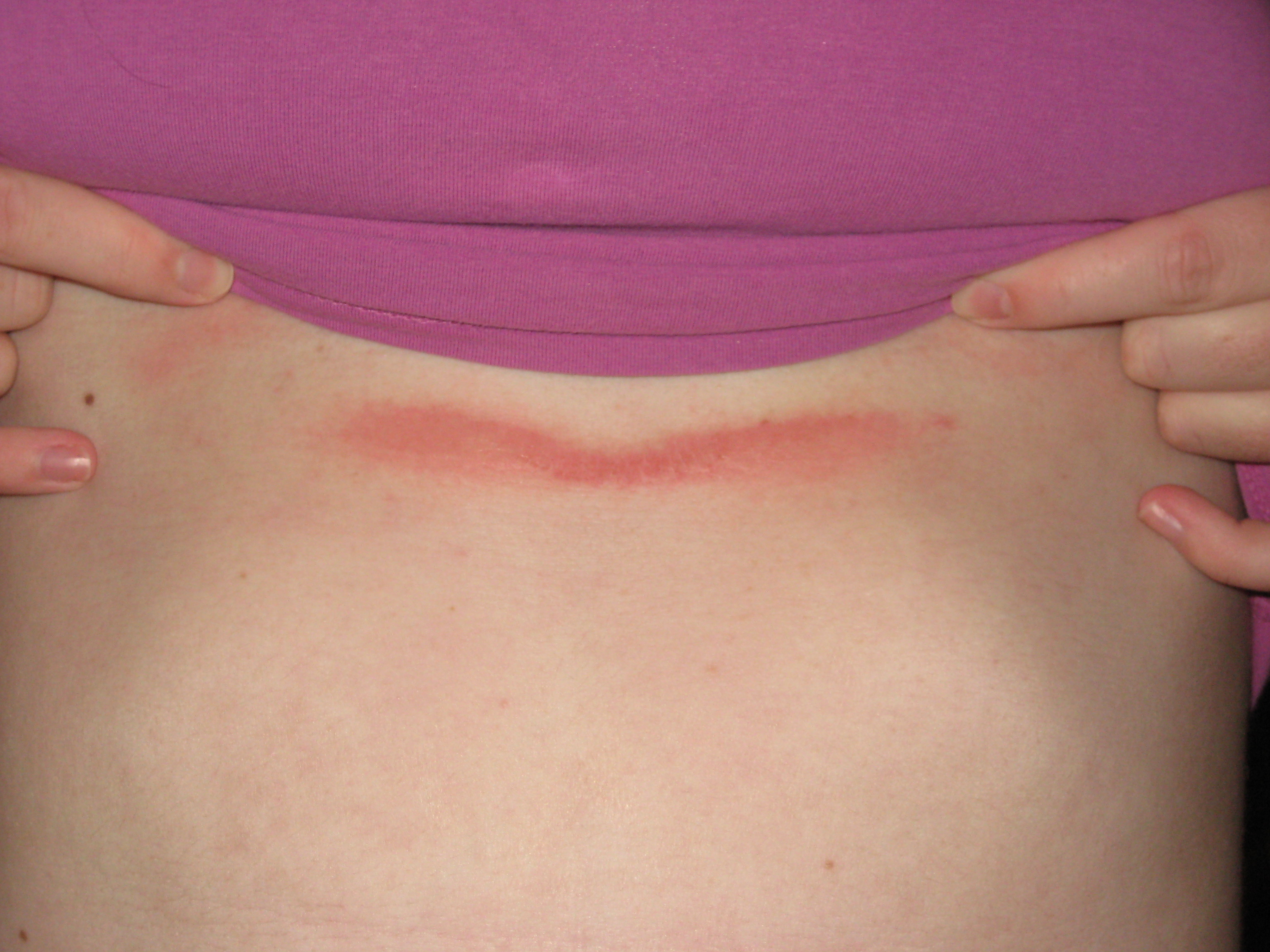As the weather warms, the coverage we look for in running clothes drops off dramatically. It seems so freeing to run with as little on as possible. I will be faster! I’m like a wild animal! It’s not until I get home and survey the damage from skin rubbing on skin or cloth that I realize it wasn’t such a good idea after all.
Chafing! Miles and miles of it. Burning, stinging, oozing, and bleeding in some very sensitive regions of my body. Add a run commuter backpack to the mix and there is bound to be chafing in areas of which you’d never thought.
We put together a list of problem areas and anti-chafing solutions, as well as a some additional fixes you can make, to keep your run commute as smooth and irritation-free as possible.
Running Form
Running with a backpack requires some adjustment. Even if you haven’t paid much attention to your form before, you will immediately recognize if adjustments to your stride or posture need to be made. Runner’s World recently reposted one of the best articles on form that I have ever read. It was written in 2005, and there have certainly been lots of others since, but not many with advice that you can so easily apply on your own.
Your pack, with sternum and waist straps buckled and cinched, will normally pull your shoulders back and straighten your posture while you run. Run with strides too far apart under this setup however, and no matter how well your pack fits, it will rub somewhere. Practice running with good form and you will not only reduce the likelihood of backpack chafe, you’ll also find yourself to be a more effective runner without the pack.
Chafing Problem Areas
Under arms: Device cases and backpack straps are the worst offenders here. To borrow from a recent very popular animated film in which the main character suffers from complex icy architecture shooting from her fingers unsolicited, “Conceal it. Don’t feel it.” A layer of clothing between you and the offending strap and a good bit of lube is the only way to prevent this if running with these items is desired or required. For these hot summer months, try an ultra-lightweight moisture wicking shirt. Take your pack and device case with you to the store to try on new running clothes. That way you can see if they fit comfortably together and ensure that your trouble spots are covered.
[fusion_builder_container hundred_percent=”yes” overflow=”visible”][fusion_builder_row][fusion_builder_column type=”1_1″ background_position=”left top” background_color=”” border_size=”” border_color=”” border_style=”solid” spacing=”yes” background_image=”” background_repeat=”no-repeat” padding=”” margin_top=”0px” margin_bottom=”0px” class=”” id=”” animation_type=”” animation_speed=”0.3″ animation_direction=”left” hide_on_mobile=”no” center_content=”no” min_height=”none”]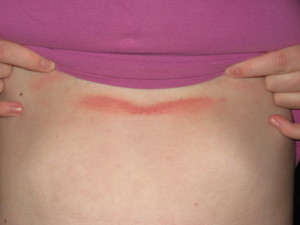
Shoulders, Lower Back and Stomach: These are all from backpack straps. We here at TRC are of at least two different schools of thought on this one. Josh likes his straps tight; I like mine kinda loose. Again, look at your form and your pack and make adjustments on the fly. If your pack is rubbing a hole in your back, it is moving around. If it is moving around, either you are bouncing or wasting tons of energy with side-to-side motion, or your pack it too loose, or possibly both.
Here is Josh’s advice to a new run commuter suffering from backpack-related chafing:
‘First of all, cinch everything down like crazy. In order, tighten your waist strap, then shoulder straps, then sternum strap… All of these can be adjusted on the run as well. Usually, I readjust everything once I’ve been running for a few minutes.
Wear polyester-based shirts; either 100% poly, or at a minimum, a 50/50 poly/cotton blend. After you start sweating, these types of shirts tend to stick to your skin better than cotton, and provide a slippery, non-irritating surface for your pack to slide over if it is loose.’
Nipples: Chafed nipples are mostly commonly a problem for men, but women can get them too from wearing an ill-fitting or poorly supporting bra, but that may need to be addressed in a later post. The cause is the same though: bouncing. Noticing a theme here? Some guys stick Band-Aids over their nips, others use Vaseline or an anti-chafe product, such as Red11Sport. And then, some just deal with it until their nipples become less sensitive. One or two good long, sweaty runs will result in painfully raw, possibly bleeding, nipples. Thankfully they heal quickly and will be tougher and less likely to chafe again. As long you keep running regularly, they will stay that way. As a mother who has breastfed two children, I have to say that this last option is probably the easiest in the long run if you can handle it.
Inner thighs: I am a normal-sized human being, and my thighs touch. They did when I was a little girl, and they will until the day I die, or, God-forbid, only have one leg. This is arguably the most common spot for chafing on a woman. Do an internet search on chafing (like I did for this post) and most of what comes up are blog posts from women whose thighs touch and means by which they’ve tried to prevent it. You must do one or both of two things: cover them or lube them.
[/fusion_builder_column][fusion_builder_column type=”1_1″ background_position=”left top” background_color=”” border_size=”” border_color=”” border_style=”solid” spacing=”yes” background_image=”” background_repeat=”no-repeat” padding=”” margin_top=”0px” margin_bottom=”0px” class=”” id=”” animation_type=”” animation_speed=”0.3″ animation_direction=”left” hide_on_mobile=”no” center_content=”no” min_height=”none”]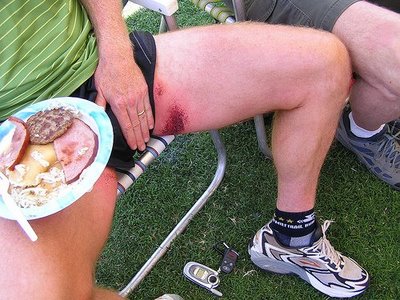
“I feel like such a sexy beast standing at the trailhead lubing up my thighs before a run,” said no one ever. But no one ever managed a sexy walk while suffering from inner thigh chafe either. Compression-style gear is tight-fitting, like bike shorts without the chamois, and acts like a second skin, so all the friction will be on it and not your sensitive bits. However if heading out of doors wearing what feels [/fusion_builder_column][fusion_builder_column type=”1_1″ background_position=”left top” background_color=”” border_size=”” border_color=”” border_style=”solid” spacing=”yes” background_image=”” background_repeat=”no-repeat” padding=”” margin_top=”0px” margin_bottom=”0px” class=”” id=”” animation_type=”” animation_speed=”0.3″ animation_direction=”left” hide_on_mobile=”no” center_content=”no” min_height=”none”][looks] like sausage casing doesn’t appeal to you, try a loose, lightweight layer on top. You may also notice that shortening your stride length helps keep your shorts down on/between your legs. I don’t know who told running clothes manufactures that everyone likes (and can wear) short shorts for running. Some companies are getting better about making slightly longer lengths, but I for one do not want very short or very tight. Rubbing a friction reducing product on the areas that touch will not only help keep your thigh skin from rubbing off, but also your shorts from riding up, and you from walking like a monkey for a couple of days.
Anti-Chafe Solutions
Try out different kinds of anti-friction products. You can often buy small/trial sizes of different kinds to help you find one you like. When you do find one that works, buy several so you’re never stuck without it.
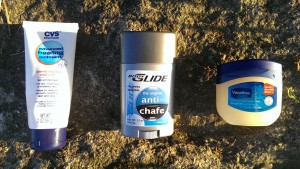
Aquaphor and Vaseline are my favorite products because they have so many uses. They are also affordable and easy to find. Before I head out on a run, I smear it on my lips, under the band of my sports bra and shorts, and on my thighs. If, despite all my preventative measures, I still get a raw spot, Aquaphor is very soothing as well.
Here are some products we like, and where to find them:
- Aquaphor – drugstores, anywhere lotions are sold
- Vaseline – drugstores and anywhere lotions are sold
- Red11Sport
- Body Glide
- Nip Guards
- Band-Aids, Elastoplasts, plasters – nearly every store in the universe
On-the-Run Chafing Emergencies
I may scandalize or otherwise shock you here, but picture this: you’re headed home from work. It’s been a fine day, relatively normal, but you are eagerly anticipating leaving on vacation on Friday. It is only Tuesday, but you have much on your mind- saltwater fishing, that chef that’s going to come cook an amazing dinner for y’all, which books are you going to read, how many pairs of running shoes can bring without your partner mocking you…Anyway, the run home will be great for thinking about those things.
It’s pretty hot, and you are getting ridiculously sweaty, because in this story you are me and I sweat. A lot. Suddenly, a twinge of something, a tiny prick of stinging pain rouses you from your pleasant thoughts. You realize you forgot to put on your anti-chafing stuff! DAMMMMMITTTT! Pleasant thoughts instantly change to – cute new bathing suit is ruined, ocean water is going to burn like acid, how am I going to look amazing wearing shorts and walking like someone who is just getting used to standing upright? If you can get over how gross this idea is, you still can. Raise your hand up to your mouth and spit a big glob of saliva on it, cough something up if you have to. Then rub it on the spot that’s starting to chafe (in this story, your thighs, but I’ve used it under my arms, my bra band, and my pack shoulder straps too – don’t judge), and every time it dries out, do it again until you get home. Disgusting? Yes, absolutely, but it’s better than the alternative in my book.
So, there it is. I hope these tips and ideas will get you through a long, hot summer of run commuting without losing too much skin. I’d love to hear how you manage chafing and your high friction areas too.[/fusion_builder_column][/fusion_builder_row][/fusion_builder_container]
